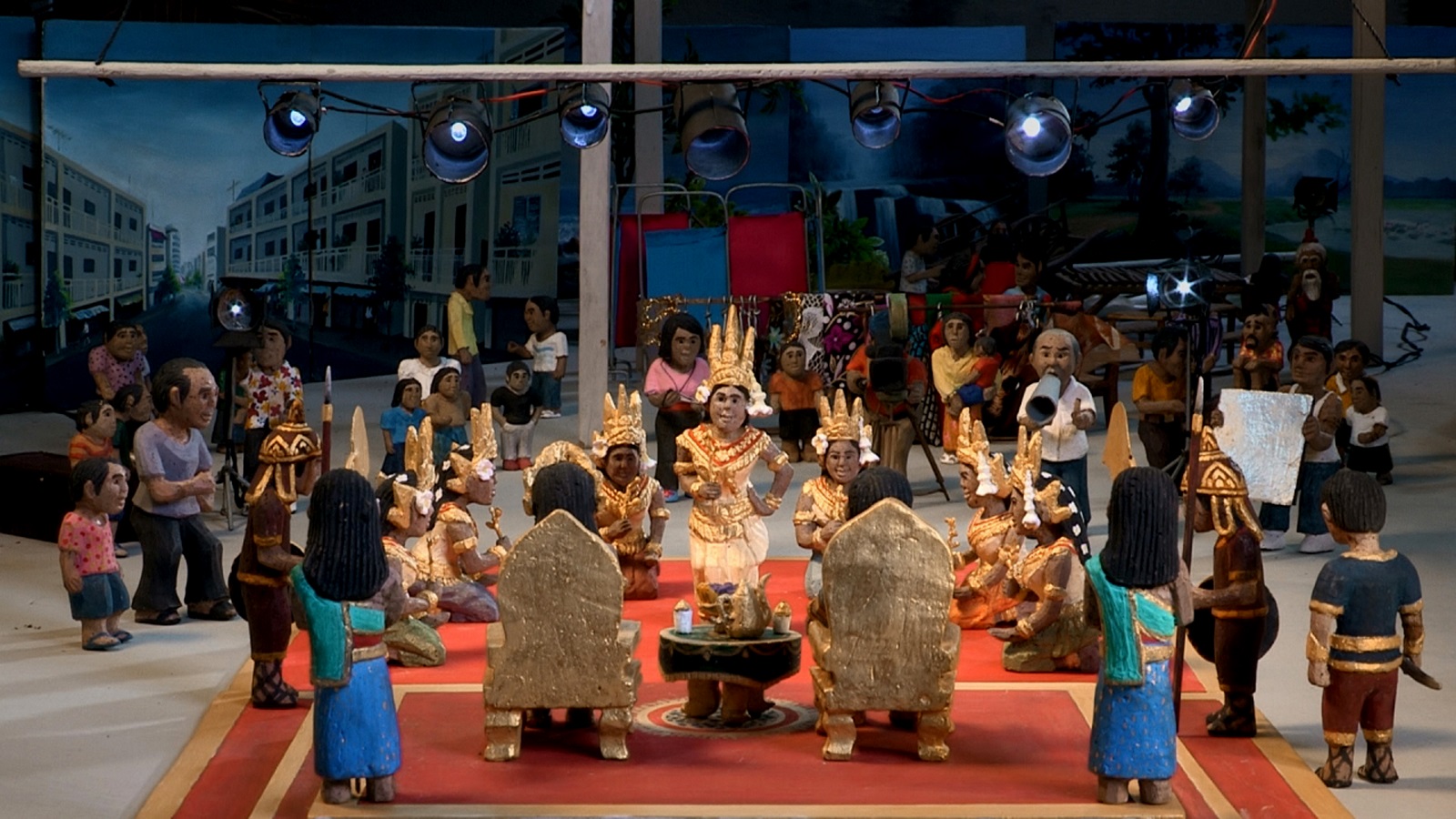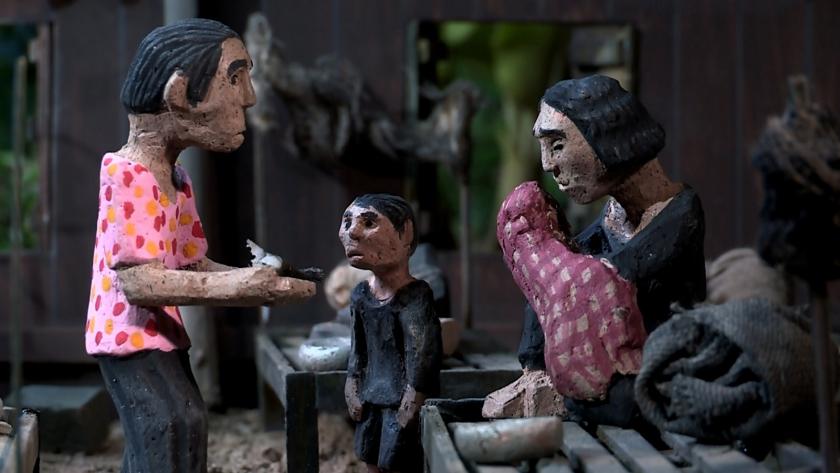History has been told in many ways on film, but Rithy Panh achieves something new, something unique and unsettling, in The Missing Picture. It’s the story of his native Cambodia, specifically the years from 1975, when the Khmer Rouge occupied the country's capital Pnomh Penh: driven by an ideology (a mixture of Marx and Rousseau, as it's described here) that sought to exterminate individuality in society, they created Democratic Kampuchea, an attempt at a new classless world that tried to do away with everything from the past, and killed a large part of the population in the process. It’s also Panh’s personal story – he was barely a teenager in 1975 – and recounts the deaths of his family: Panh himself survived by fleeing across the border into Thailand in 1979.
The director has tackled this momentous subject before in a number of films, both documentary and fiction. The Missing Picture adds a new element, the use of clay figurines, fashioned and painted before our eyes, depicting family members and others in a series of still tableaux that are combined together with plentiful documentary material drawn from Khmer Rouge archives. It’s told to a mesmerising but quiet narrative (in the voice of Randal Douc): the unlikely result can only be compared to something like a story from Solzhenitsyn, told in stop animation that never starts, with an occasional visual style that Chagall would have understood, and meditative overvoice commentary (recalling, somehow, Agnès Varda in The Gleaners and I).
It's also a film that meditates on cinema itself, right from its opening shots of abandoned, decaying boxes of film stock (a frame of reference that possibly helped it towards victory in the 'Un Certain Regard' programme at Cannes last year). There’s the riddle behind the title itself, to which each viewer must provide their own answer. Is the missing picture the image depicting what really happened, that is never to be found in the Khmer Rouge sources? Or the story elements that were never recorded (only recreated here by the clay figurines) as we witness the death of the narrator’s father, who starved himself to death in an act of defiance (the only assertion of identity that remained under such desperate conditions), and mother, who later died in a hospital as her son attempted to find food for her (main picture, above).
 Then there’s the literal recreation of film memories. Pre-1975 life is remembered as a time of plenty (“I remember abundance,” the narrator recalls), whether in the quotidian rituals of family and home life, or in a scene from an elaborately crafted film set (pictured above: incidentally, Cambodia’s King Norodom Sihanouk, whom the Khmer Rouge ousted, was a cinema fanatic). The motif returns in a later scene, this time within the indoctrination camps, where screenings of official documentaries concluded slavish working days in the fields (“the colour has vanished”: pictured below).
Then there’s the literal recreation of film memories. Pre-1975 life is remembered as a time of plenty (“I remember abundance,” the narrator recalls), whether in the quotidian rituals of family and home life, or in a scene from an elaborately crafted film set (pictured above: incidentally, Cambodia’s King Norodom Sihanouk, whom the Khmer Rouge ousted, was a cinema fanatic). The motif returns in a later scene, this time within the indoctrination camps, where screenings of official documentaries concluded slavish working days in the fields (“the colour has vanished”: pictured below).
There are recurring long shots of waves battering a coastline, playing perhaps on the idea that this water is washing away the images, the “pictures” (echoing somehow what Doris Lessing wrote, in a literary context, about the mujahedin war in Afghanistan, “the wind blows away our words”). Against all the destruction, the desecration of the rich tones of life into chilly black and white propaganda, there is set the personal recreation of that world, reconstituted in the coloured clay figures that people the panoramas in which they are placed, motionless as the camera weaves between them.
 Somewhere in there, too, remains the responsibility of the artist to survive, as Panh did, to tell the story. To assimilate and reject the false images, to create the new images – to reach a personal viewpoint. Which may involve admitting, finally, that there will always be a “missing picture”.
Somewhere in there, too, remains the responsibility of the artist to survive, as Panh did, to tell the story. To assimilate and reject the false images, to create the new images – to reach a personal viewpoint. Which may involve admitting, finally, that there will always be a “missing picture”.
If all that sounds abstract, theoretical, it’s not. The Missing Picture is a cinematic experience that opens up, rather than closes down its material, and affirms humanity against all terrible odds.
Overleaf: watch the trailer for The Missing Picture















Add comment